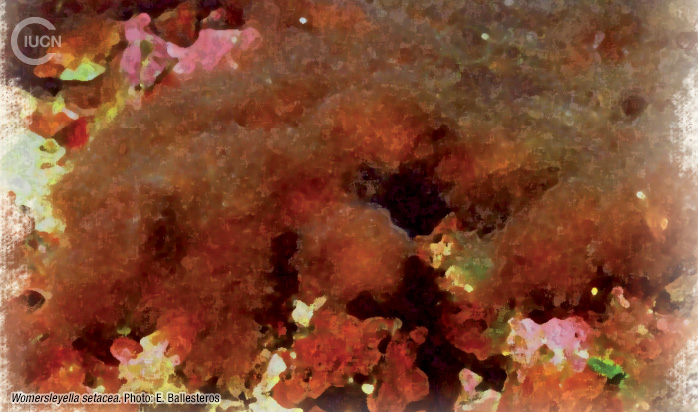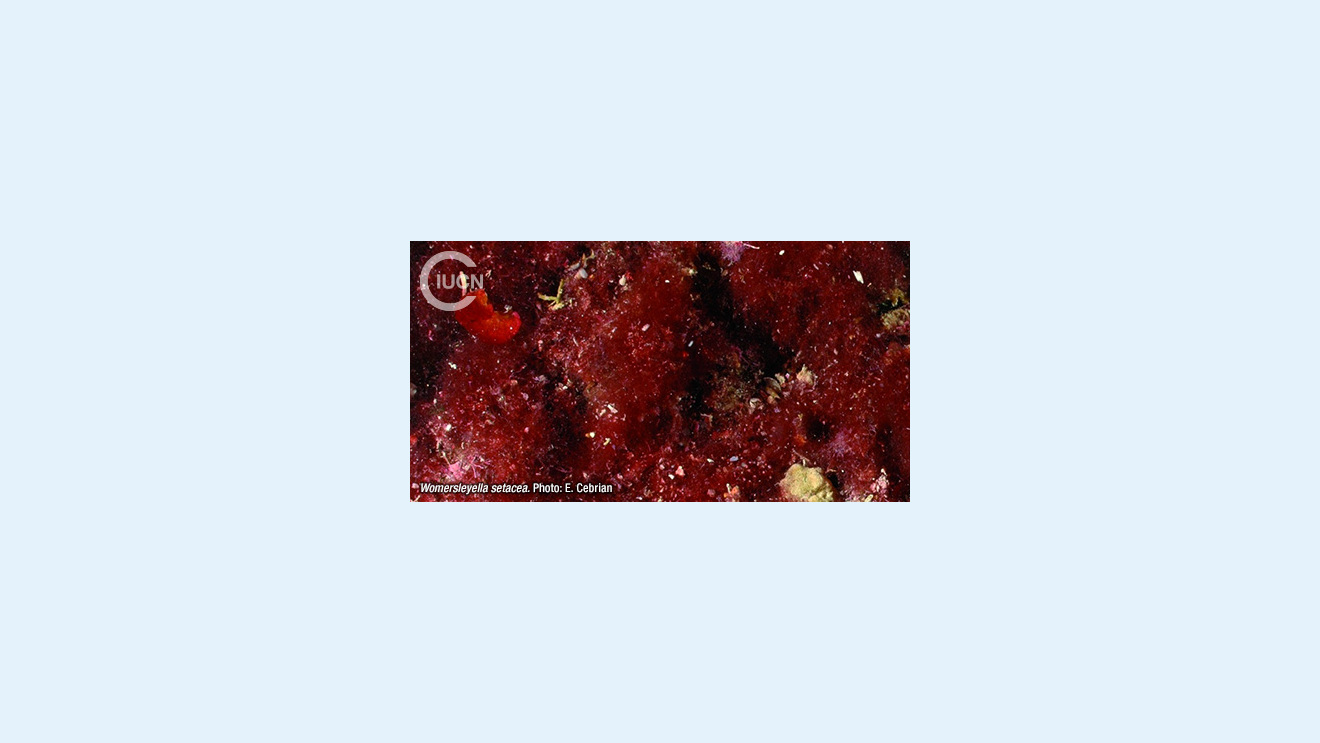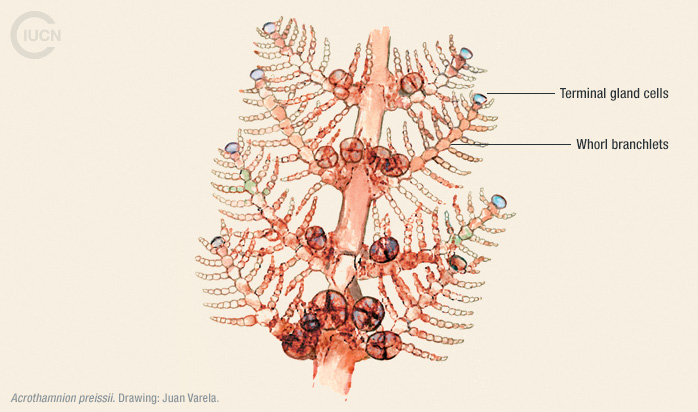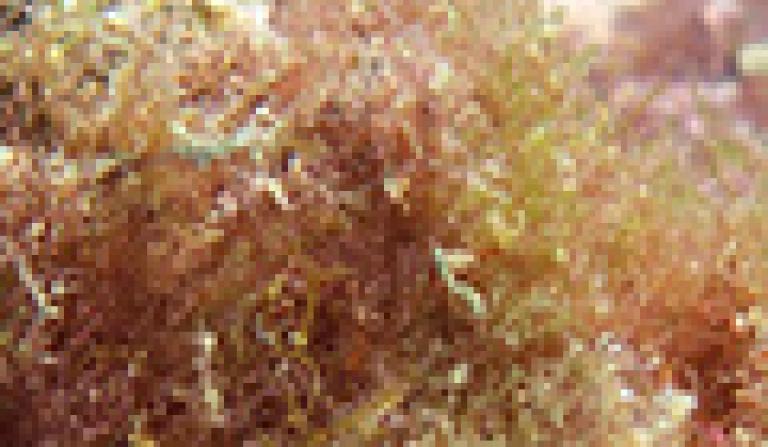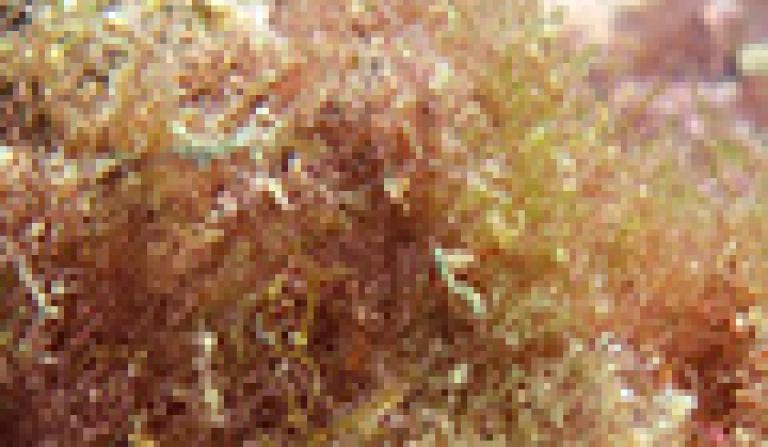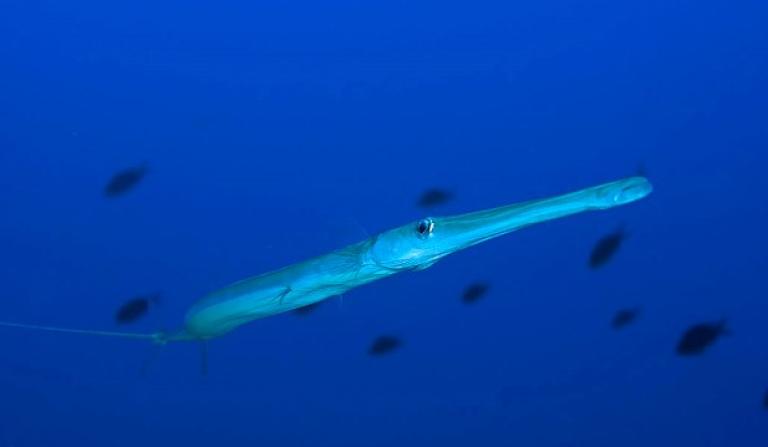Womersleyella setacea
Information
It is usually found at depths below 15 m, and mainly in dimly lit habitats (with a preference for low temperatures) such as coralligenous outcrops.
Despite the species’ abundance, Mediterranean populations seem to show only vegetative reproduction, primarily by fragmentation.
It can easily be confused in the field with other red algal species of similar structure (i.e. Acrothamnion preissii).
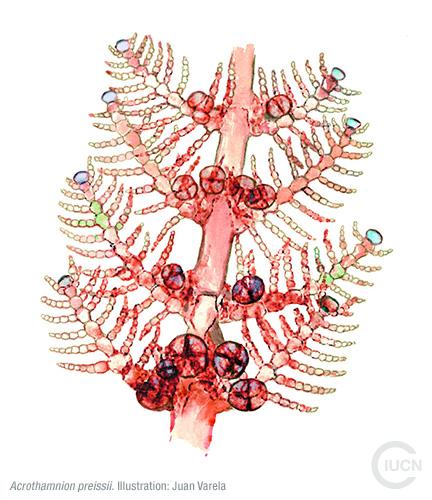
Womersleyella setacea was described originally from the Hawaiian Islands and later reported in other tropical localities in both the Pacific and Atlantic Oceans. It was first observed in Mediterranean coastal waters in the 1980s in Provence (France) and Italy, and rapidly spread throughout the Mediterranean to Corsica, the Mediterranean coasts of Spain, the Balearic Islands, the northern Adriatic Sea, Malta and Greece. The origin and mode of introduction of this red filamentous species remain unknown, but a suggested main vector is hull fouling on commercial ships.
In many Mediterranean localities it has substantial adverse effects on native communities by modifying benthic assemblages and outcompeting key native species (i.e. Paramuricea clavata, Cystoseira spinosa and various sponge species). Its fast growth, ability to exploit nutrients and persistence form the basis of Womersleyella setacea’s success in outcompeting native macroalgae and benthic invertebrates on Mediterranean rocky bottoms. Another characteristic of this invader is its ability to trap sediments, preventing the attachment of other competing filamentous algae. This hinders the settlement of native species and the survival of their juvenile stages, and consequently reduces the species diversity and composition of local algal communities.
Unknown.
Cebrian E. Rodríguez-Prieto C., 2012. Marine Invasion in the Mediterranean Sea: The Role of Abiotic Factors When There Is No Biological Resistance. PLoS ONE 7(2): e31135.
Nikolic, V. et al, 2010. Distribution of invasive red alga Womersleyella setacea (Hollenberg) R.E. Norris (Rhodophyta, Ceramiales) in the Adriatic Sea. ACTA ADRIAT., 51(2): 195 – 202.
DAISIE. http://www.europe-aliens.org/speciesFactsheet.do?speciesId=100988
